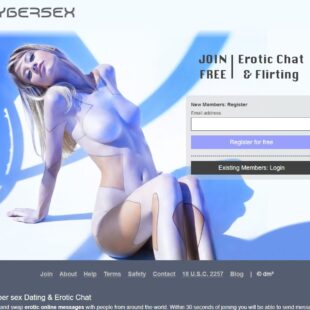bilateral nephrolithiasis without hydronephrosis
Noncontrast helical CT scan of the abdomen demonstrating a stone at the right ureterovesical junction. [78] Nevertheless, a shift seems to be occurring from the use of ESWL to that of ureteroscopy, due to the latters greater efficacy. Acute ureteral obstruction: value of secondary signs of helical unenhanced CT. AJR Am J Roentgenol. Ann Emerg Med. Although the role of supranormal hydration in the management of renal (ureteral) colic is controversial (see below), patients who are dehydrated or ill need adequate restoration of circulating volume. If we combine this information with your protected Wen CC, Nakada SY. Porpiglia F, Destefanis P, Fiori C, Fontana D. Effectiveness of nifedipine and deflazacort in the management of distal ureter stones. [98]. A total of 14 patients with extensive bilateral nephrolithiasis underwent simultaneous bilateral lithotomy, in most instances through a single transabdominal incision. The author usually recommends antiemetics when patients with renal colic have been vomiting actively or report nausea sufficient to interfere with oral therapy. 2(2):145-9. Pediatr Radiol. Percutaneous nephrostolithotomy or perhaps even open surgical nephrolithotomy is required to remove this stone. Please confirm that you would like to log out of Medscape. Recurrent Nephrolithiasis in Adults: A Comparative Effectiveness Review Obstructive uropathy is a disorder of the urinary tract that occurs due to obstructed urinary flow and can be either structural or functional. Referral to a urologist is necessary for all stones that prove refractory to outpatient management or that fail to pass spontaneously. Routine Flexible Nephroscopy for Percutaneous Nephrolithotomy in Renal Stones with Low Density: A Prospective Randomized Study. Read More. The size of the stone is an important predictor of spontaneous passage. [QxMD MEDLINE Link]. J Urol. 2nd ed. Advertising on our site helps support our mission. information submitted for this request. Oral ketorolac is available in 10-mg pills, but the efficacy of this form in persons with acute renal colic is less clear. Comparison of two diets for the prevention of recurrent stones in idiopathic hypercalciuria. Opioids can cause respiratory depression in the fetus; therefore, they should not be used near delivery or when other medications are adequate. Igiraneza G, Hategekimana T, Manzi OM, Ogbuagu O. BMJ Case Rep. 2017 Oct 15;2017:bcr2017221270. However, if the condition persists in both kidneys (bilateral hydronephrosis), a more serious complication can arise: kidney failure. Holdgate A, Pollock T. Nonsteroidal anti-inflammatory drugs (NSAIDs) versus opioids for acute renal colic. Urology. Urology. Urology. 2007 Nov. 50(5):552-63. MRI would be a second line choice and low dose CT scans should be saved as a last resort. [Guideline] Coursey CA, Casalino DD, Remer EM, Arellano RS, Bishoff JT, Dighe M, et al. Consult a urologist immediately in cases of ureterolithiasis with proximal UTI. In two small studies, ultrasonographic sensitivity for pyonephrosis was found to be 62-67%. [QxMD MEDLINE Link]. Urologic diseases in America project: urolithiasis. Francisco Talavera, PharmD, PhD Adjunct Assistant Professor, University of Nebraska Medical Center College of Pharmacy; Editor-in-Chief, Medscape Drug ReferenceDisclosure: Received salary from Medscape for employment. Open nephrostomy has been used less and less often since the development of ESWL and endoscopic and percutaneous techniques; it now constitutes less than 1% of all interventions. National Institute of Diabetes and Digestive and Kidney Diseases. Bethesda, MD 20894, Web Policies [QxMD MEDLINE Link]. 2012 Jun. Larger stones (ie, 7 mm) that are unlikely to pass spontaneously require some type of surgical procedure. Strongly encourage patients who have a stone at a young age (ie, < 25 y), multiple recurrences, a solitary functioning kidney, or a history of prior kidney stone surgery to obtain a 24-hour urine collection for stone prevention analysis, especially if they are motivated to comply with a long-term stone prevention program. clip-path: url(#SVGID_6_); Careers. Acute renal colic presents as cramping and intermittent abdominal and flank pain as kidney stones travel down the ureter from the kidney to the bladder.2 Pain is often accompanied by nausea, vomiting, and malaise; fever and chills may also be present.2 Similarity with a previous episode should increase confidence in the diagnosis, although the value of personal or family history during an episode of renal colic is not known. In some cases, drainage of an obstructed kidney is necessary and stent placement is inadvisable or impossible. Hollingsworth JM, Rogers MA, Kaufman SR, Bradford TJ, Saint S, Wei JT, et al. Kidney Int. If a patient suffers from recurrent calcium stones but metabolic abnormalities are absent or controlled with treatment, thiazides, potassium citrate, or both should be offered. This discomfort can be alleviated to some extent by pain medications, anticholinergics (eg, oxybutynin, tolterodine), alpha-blockers, and topical analgesics (eg, phenazopyridine). Abnormal enlargement or swelling of a kidney due to dilation of the kidney calices and the kidney pelvis. Treatment of renal calculi without hydronephrosis using a standard Medical expulsive therapy in adults with ureteric colic: a multicentre, randomised, placebo-controlled trial. During this procedure the renal artery is clamped, which raises the risk for ischemic injury, as well as reperfusion injury once the procedure is complete. Medscape Medical News. Progress in Understanding the Genetics of Calcium-Containing Nephrolithiasis. Giedelman C, Arriaga J, Carmona O, de Andrade R, Banda E, Lopez R, et al. Hydronephrosis Hydronephrosis Hydronephrosis is swelling of one or both kidneys. Likewise, starting SWL on a lower energy setting with stepwise power (and SWL sequence) ramping has also been advocated in order to achieve vasoconstriction during treatment, which prevents renal injury as well as increase SFR (stone free rates). Percutaneous procedures have higher morbidity than ESWL and ureteroscopy and so are generally reserved for large and/or complex renal stones and cases in which the other two modalities have failed. 2000 Nov. 27(4):617-22. All material on this website is protected by copyright, Copyright 1994-2023 by WebMD LLC. [Full Text]. Conservative management consists of pain control, medical expulsive therapy with an alpha blocker, and follow-up imaging within 14 days to monitor stone position and assess for hydronephrosis. Narepalem N, Sundaram CP, Boridy IC, Yan Y, Heiken JP, Clayman RV. 40(2):119-24. ACR Appropriateness Criteria acute onset flank pain--suspicion of stone disease. {ref69), Unsurprisingly, as robotic-assisted surgery becomes increasingly utilized, it has also been found useful in anatrophic nephrolithotomies. 2014 Nov. 192 (5):1329-36. PCNL is recommended for symptomatic patients with a total renal stone burden >20 mm or lower pole stones >10 mm. HHS Vulnerability Disclosure, Help [80] A meta-analysis comparing the two approaches showed that although ESWL was just as effective for the management of stones less than 1 cm in the proximal ureter, ureteroscopy otherwise had the following advantages{ref77): Although data have been somewhat conflicting, the EAU and urologic community recommend that MET be used as an adjunct to ESWL to expedite stone passage, increase stone-free rates, and potentially reduce analgesic requirements. Urology. 152(1):26-8. Elsevier 2020. https://www.clinicalkey.com. If medication or citrate supplementation is prescribed, serum potassium levels (for patients taking thiazide diuretics or potassium citrate) and liver enzymes (allopurinol) should be monitored to detect potentially serious adverse effects.15 Potassium levels should be monitored before prescription, within two weeks of prescription, and then every 12 months (earlier if illness occurs or another medication is added).43 There are no recommendations on the frequency of monitoring for hepatotoxicity. Staghorn Calculus: Causes, Symptoms & Treatment - Cleveland Clinic Alpha blockers for treatment of ureteric stones: systematic review and meta-analysis. Duplex Kidney (Duplicated Ureters): Diagnosis, Cause & Symptoms They estimated that four patients would need treatment for one patient to realize benefit from alpha-blockers. 2012 Feb. 40(1):67-77. Pearle MS, Calhoun EA, Curhan GC. Moore CL, Bomann S, Daniels B, Luty S, Molinaro A, Singh D, et al. https://profreg.medscape.com/px/getpracticeprofile.do?method=getProfessionalProfile&urlCache=aHR0cHM6Ly9lbWVkaWNpbmUubWVkc2NhcGUuY29tL2FydGljbGUvNDM3MDk2LXRyZWF0bWVudA==. Retroperitoneal fibrosis: a rare cause of acute renal failure. Before However, stone passage also depends on the exact shape and location of the stone and the specific anatomy of the upper urinary tract in the particular individual. Urology. Nephrolithiasis, also known as kidney stones or renal calculi, refers to the presence of stones within the kidneys. The resulting small fragments pass in the urine. Treatment selection and outcomes: renal calculi. Calcium stones. Thiazide diuretics, potassium citrate, or allopurinol should be prescribed after recurrence of calcium stones, even in the absence of metabolic abnormalities. 2004 Dec. 64(6):1111-5. 2005 Jun. African Journal of Urology. 2017 Mar;101:e9-e10. Saigal CS, Joyce G, Timilsina AR, Urologic Diseases in America Project. This is the American ICD-10-CM version of N13.2 - other international versions of ICD-10 N13.2 may differ. 2006. J Urol. 79 (6):1236-41. 2019. https://www.aafp.org/afp/2019/0415/p490.html. After diagnosing renal (ureteral) colic, determine the presence or absence of obstruction or infection. [QxMD MEDLINE Link]. [74] If retrograde stent placement is determined to be more appropriate, attempts to minimize additional pressurization of the collecting system by using minimal contrast and or decompressing prior to contrast administrating should be employed. Urology. In other patients, whether or not they have elected directed metabolic therapy, routine follow-up care consists of plain abdominal radiography (or renal ultrasonography in the case of radiolucent stones) every 6-12 months. MET with alpha-blockers also appears to improve the results of ESWL (see Surgical Care) inasmuch as the stone fragments resulting from treatment appear to clear the system more effectively. Dual wave handheld lithotripters have been described for the use of fragmentation and retrieval of calculi. 4 Currently, the main treatment methods for renal calculi without hydronephrosis include flexible ureteroscope and percutaneous nephrolithotomy. 88 (2):90-93. A laparoscopic version of this procedure has been developed in more recent years. Oral analgesics are insufficient to manage the pain. They filter waste and fluid from the blood and produce urine. 1, 2 Worldwide, it is also increasing in Europe and . All patients with kidney stones should be screened for risk of stone recurrence with medical history, basic laboratory evaluation, and imaging. .st0 { Fankhauser CD, Kranzbhler B, Poyet C, Hermanns T, Sulser T, Steurer J. Two calculi in a dependent calyx of the kidney (lower pole) visualized through a flexible fiberoptic ureteroscope. Worcester EM, Coe FL. Bradley Fields Schwartz, DO, FACS is a member of the following medical societies: American College of Surgeons, American Urological Association, Association of Military Osteopathic Physicians and Surgeons, Endourological Society, Society of Laparoscopic and Robotic Surgeons, Society of University UrologistsDisclosure: Serve(d) as a director, officer, partner, employee, advisor, consultant or trustee for: Endourological Society Board of Directors; President Elect North Central Section of the American Urological Association
Serve(d) as a speaker or a member of a speakers bureau for: Cook Medical. As a rule, dietary calcium should be restricted to 1000-1200 mg/d in patients with diet-responsive hypercalciuria who form calcium stones. [44], In the case of pediatric patients with uncomplicated ureteral stones 10 mm or asymptomatic non-obstructing renal stones, active surveillance with periodic ultrasonography can be offered. 2014 Feb 6. Hydronephrosis: Causes, Symptoms, and Diagnosis - Healthline 2002 Jun. Stone formation occurs when there's an excess of crystal-forming substances that can't be dissolved in the urine. Approximately 86% of kidney stones pass spontaneously; this proportion is lower for stones larger than 6 mm (59% vs. 90% for smaller stones).24 Although stones larger than 6 mm in diameter are often removed by urologists,5 these are the stones that have greatest benefit from medical expulsive therapy.27 Medical expulsive therapy with alpha blockers (e.g., tamsulosin [Flomax], 0.4 mg per day; doxazosin [Cardura], 4 mg per day) hastens and increases the likelihood of stone passage, reduces pain, and prevents surgical interventions and hospital admissions.5,27 These medications should be offered to patients with distal ureteral stones 5 to 10 mm in diameter.27 Tamsulosin is the most studied medication, but other alpha blockers seem equally effective.27 Calcium channel blockers (e.g., nifedipine) are less effective and may be no more effective than placebo.2830 Coadministration of oral corticosteroids or increasing fluid intake does not hasten stone passage or alleviate renal colic.5,19, Patients with newly diagnosed kidney stones should receive a basic evaluation consisting of a detailed medical history, serum chemistry, and urinalysis/urine culture. As a consequence, multiple sessions of PCNL may be necessary to achieve high stone-free rates. As stones move into your ureters the thin tubes that allow urine to pass from your kidneys to your bladder signs and symptoms can result. The stent forces the fragments to pass slowly, which is more efficient and prevents clogging. All rights reserved. Overall, MET is associated with a 65% greater likelihood of stone passage with greatest benefits seen with >5 mm distal stones. [QxMD MEDLINE Link]. In 2 double-blinded studies, it apparently provided pain relief equivalent to narcotic analgesics in addition to relieving nausea. 73(4):928.e5-6. Bove P, Kaplan D, Dalrymple N, Rosenfield AT, Verga M, Anderson K, et al. The original rationale for MET was based on the possible causes of failure to spontaneously pass a stone, including ureteral stricture, muscle spasm, local edema, inflammation, and infection. 2019 Jun 28;8(3):44-58. doi: 10.5527/wjn.v8.i3.44. Causes. There is also the risk of ureteral injury, which can be reduced with the use of preoperative double-J stenting. Advertising revenue supports our not-for-profit mission. 26th ed. Nephrolithiasis. [1]. Nerve supply of the kidney. [QxMD MEDLINE Link]. Scales CD Jr, Smith AC, Hanley JM, Saigal CS, Urologic Diseases in America Project. Urology. Medical therapy for stone disease takes both short- and long-term forms. Eur Urol. 2007 Aug. 34(3):409-19. Hollingsworth JM, Canales BK, Rogers MA, Sukumar S, Yan P, Kuntz GM, et al.


